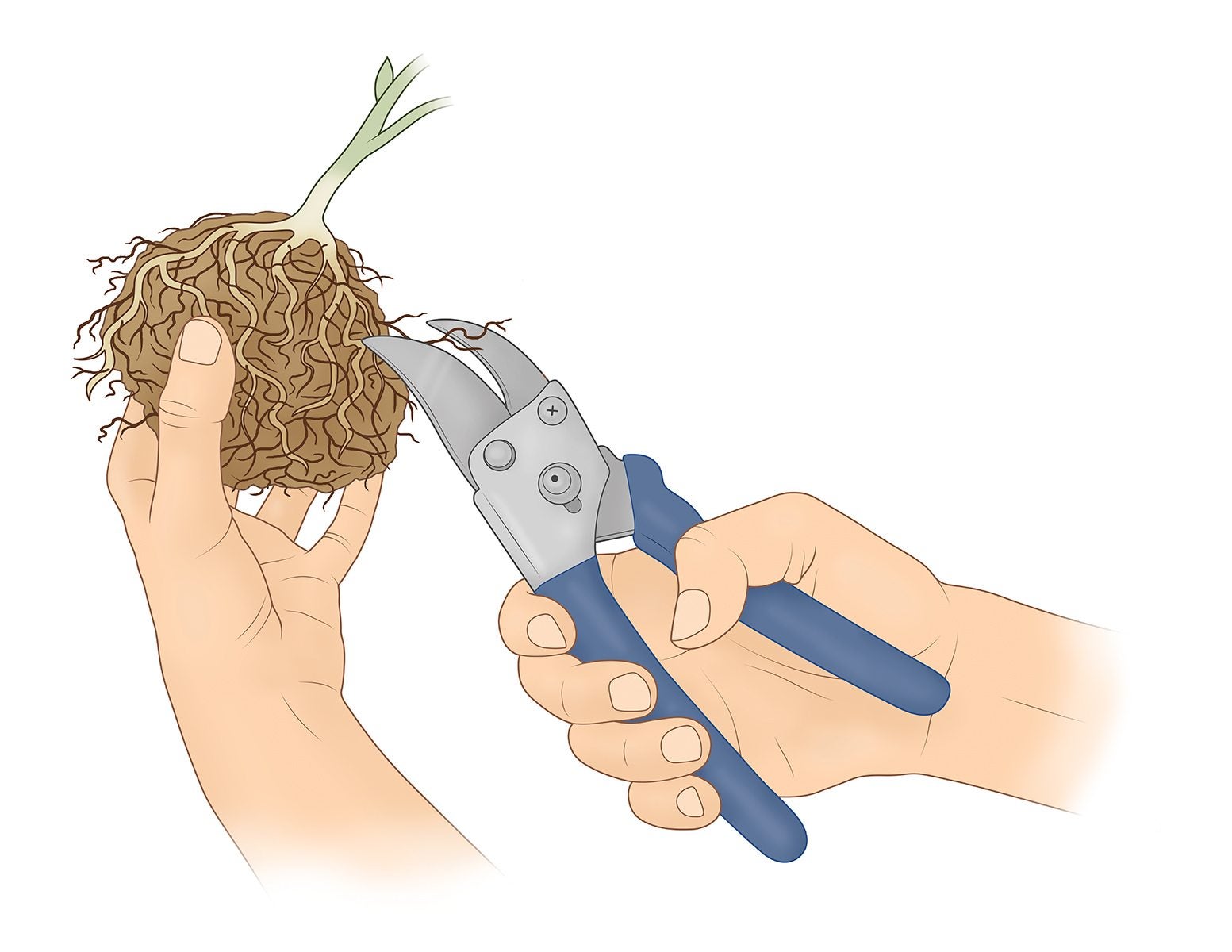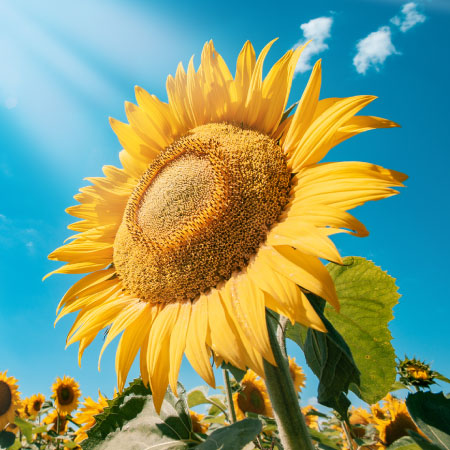Information On How To Prune Roots On Houseplants


Sometimes, to cultivate plants for indoor use, you end up doing some root cutting. This is an acceptable way of dividing plants to either bring indoors, or to divide those that are pot bound so you can separate them into new pots. Whenever you have potted plants in your home, you end up with the issue of rootbound plants. This is when the pot is full of mostly roots and very little dirt is left. This happens as the plant matures. Eventually, the roots grow to the shape of the pot and you end up with a pot shaped clump of roots.
How to Prune Roots on Rootbound Plants
Most plants will tolerate simple root pruning. You will want to do root cutting on the thread roots, not the tap roots. The tap roots will be the larger roots and the thread roots will be the small roots that grow off the tap roots. All you have to do is take the plant and cut the tap roots apart, removing no more than one-third of the thread roots in the process. You shouldn't shorten the tap roots at all during this process, but using clippers to trim the thread roots is acceptable. Also, prune roots that are dead looking away. Root pruning is nothing more than stunting a plant for repotting. You don't want the pot to have a huge clump of roots in it because this means the plant will not get much nourishment from the dirt. This is because less soil will fit in the pot. Root cutting keeps the plant smaller and, therefore, in a smaller pot longer. Rootbound plants will eventually die. If you start seeing that the leaves are turning yellow or the whole plant is wilting, check the root system in the pot. Chances are you have one of those rootbound plants and will have to perform some root pruning to help this plant survive. Keep in mind that whenever you cut roots, you need to be careful. When you cut the roots, you are injuring them, and some plants that are sickly or unhealthy cannot handle that. This means that if you have to cut roots to repot your plants, be sure to do it very selectively and carefully. Pruning roots is a normal part of helping your houseplants grow. You just have to be careful whenever handling the root structure of any plant, and be sure to give plenty of water and fertilizer, if recommended in the plant instructions, after you do root pruning on any of your plants.
Gardening tips, videos, info and more delivered right to your inbox!
Sign up for the Gardening Know How newsletter today and receive a free copy of our e-book "How to Grow Delicious Tomatoes".

Kathee Mierzejewski was with Gardening Know How in the very beginning, writing many of the site's foundational articles.
-
 Zinnias On Repeat: 10 Glorious Cut-And-Come-Again Varieties For Endless Summer Bouquets
Zinnias On Repeat: 10 Glorious Cut-And-Come-Again Varieties For Endless Summer BouquetsThese zinnia varieties keep giving all summer, making them the perfect choice for dedicated cutting gardens – or just the occasional homegrown bouquet.
By Ellen Wells
-
 Create A Romantic Garden Straight Out Of Bridgerton: Regency Era Romance In Your Garden
Create A Romantic Garden Straight Out Of Bridgerton: Regency Era Romance In Your GardenTry some romantic garden ideas straight out of Bridgerton. Flowers and gardens in the Regency era were lush and charming and you can get the same look!
By Bonnie L. Grant
-
 8 Easy Care Houseplants That Live A Long Time
8 Easy Care Houseplants That Live A Long TimeClick here to learn about our 8 favorite low maintenance houseplants that can, with proper care, live a long time.
By Amy Grant
-
 How Often Should You Repot Plants?
How Often Should You Repot Plants?Escaping roots and shrinking leaves may mean your plant wants a new pot, but some like staying cramped and cozy.
By Mary Ellen Ellis
-
 Orange Flowering Houseplant Varieties With Tropical Flair
Orange Flowering Houseplant Varieties With Tropical FlairClick here to learn about some cheerful orange-blooming houseplants you can try growing.
By Mary Ellen Ellis
-
 Variegated Houseplants With Lovely Leaves
Variegated Houseplants With Lovely LeavesWhat are some of the best variegated houseplants to add to your collection? Click here to find out.
By Amy Grant
-
 Lovely, Lacy Indoor Foliage Plants
Lovely, Lacy Indoor Foliage PlantsClick here to learn about some houseplants with lacy foliage to add to your collection.
By Mary Ellen Ellis
-
 Best Christmas Houseplants And Plants For Winter Holidays
Best Christmas Houseplants And Plants For Winter HolidaysClick here for an idea of the best houseplants to use for holiday décor for Christmas, Hanukkah, Kwanzaa, and New Year’s.
By Laura Miller
-
 Best Big Houseplants To Create An Indoor Oasis
Best Big Houseplants To Create An Indoor OasisIf you have the space you may want to grow some large houseplants. Here are some ideas.
By Mary Ellen Ellis
-
 Relaxing Plants To Grow Indoors For A Calmer Mind
Relaxing Plants To Grow Indoors For A Calmer MindAre there houseplants that can help you to relax? Click here to find out.
By Laura Miller